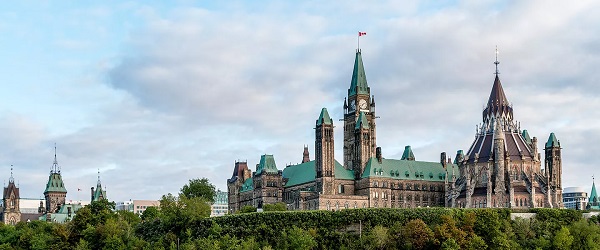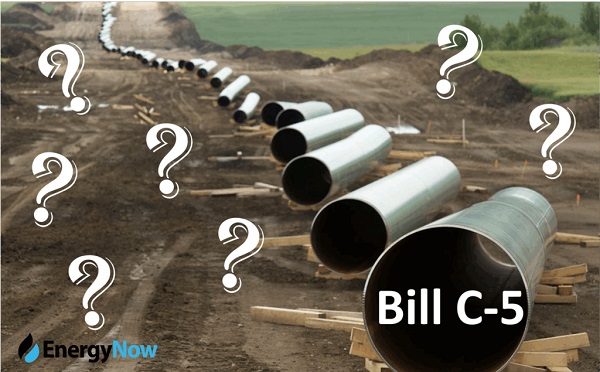Carbon Tax
Carney’s climate plan will continue to cost Canadians

From the Fraser Institute
Mark Carney, our next prime minister, has floated a climate policy plan that he says will be better for Canadians than the “divisive [read: widely hated] consumer carbon tax.”
But in reality, Carney’s plan is an exercise in misdirection. Under his plan, instead of paying the “consumer carbon tax” directly and receiving carbon rebates, Canadians will pay more via higher prices for products that flow from Canada’s “large industrial emitters” who Carney plans to saddle with higher carbon taxes, indirectly imposing the consumer carbon tax by passing those costs onto Canadians.
Carney also wants to shift government subsidies to consumer products of so-called “clean technologies.” As Carney told the National Observer, “We’re introducing changes so that if you decide to insulate your home, install a heat pump, or switch to a fuel-efficient car, those companies will pay you—not the taxpayer, not the government, but those companies.” What Carney does not mention is that much of the costs imposed on “those companies” will also be folded into the costs of the products consumers buy, but the cause of rising prices will be less distinguishable and attributable to government action.
Moreover, Carney says he wants to make Canada a “clean energy superpower” and “expand and modernize our energy infrastructure so that we are less dependent on foreign suppliers, and the United States as a customer.” But this too is absurd. Far from being in any way poised to become a “clean energy superpower,” Canada likely won’t meet its own projected electricity demand by 2050 under existing environmental regulations.
For example, to generate the electricity needed through 2050 solely with solar power, Canada would need to build 840 solar-power generation stations the size of Alberta’s Travers Solar Project, which would take about 1,700 construction-years to accomplish. If we went with wind power to meet future demand, Canada would need to build 574 wind-power installations the size of Quebec’s Seigneurie de Beaupre wind-power station, which would take about 1,150 construction years to accomplish. And if we relied solely on hydropower, we’d need to build 134 hydro-power facilities the size of the Site C power station in British Columbia, which would take 938 construction years to accomplish. Finally, if we relied solely on nuclear power, we’d need to construct 16 new nuclear plants the size of Ontario’s Bruce Nuclear Generating Station, taking “only” 112 construction years to accomplish.
Again, Mark Carney’s climate plan is an exercise in misdirection—a rhetorical sleight of hand to convince Canadians that he’ll lighten the burden on taxpayers and shift away from the Trudeau government’s overzealous climate policies of the past decade. But scratch the surface of the Carney plan and you’ll see climate policies that will hit Canadian consumers harder, with likely higher prices for goods and services. As a federal election looms, Canadians should demand from all candidates—no matter their political stripe—a detailed plan to rekindle Canada’s energy sector and truly lighten the load for Canadians and their families.
Business
The carbon tax’s last stand – and what comes after

From Resource Works
How a clever idea lost its shine
For years, Canada’s political class sold us on the idea that carbon taxes were clever policy. Not just a tool to cut emissions, but a fair one – tax the polluters, then cycle the money back to regular folks, especially those with thinner wallets.
It wasn’t a perfect system. The focus-group-tested line embraced for years by the Trudeau Liberals made no sense at all: we’re taxing you so we can put more money back in your pocketbooks. What the hell? If you care so much about my taxes being low, just cut them already. Somehow, it took years and years of this line being repeated for its internal contradiction to become evident to all.
Yet, even many strategic conservative minds could see the thinking had internal logic. You could sell it at a town hall. As an editorial team member at an influential news organization when B.C. got its carbon tax in 2008, I bought into the concept too.
And now? That whole model has been thrown overboard, by the very parties had long defended it with a straight face and an arch tone. In both Ottawa and Victoria in 2025, progressive governments facing political survival abandoned the idea of climate policy as a matter of fairness, opting instead for tactical concessions meant to blunt the momentum of their foes.
The result: lower-income Canadians who had grown accustomed to carbon tax rebates as a dependable backstop are waking up to find the support gone. And higher earners? They just got a tidy little gift from the state.
The betrayal is worse in B.C.
This new chart from economist Ken Peacock tells the story. He shared it last week at the B.C. Chamber of Commerce annual gathering in Nanaimo.
 Ken-Peacock- B.C. Chamber of Commerce annual gathering in Nanaimo.
Ken-Peacock- B.C. Chamber of Commerce annual gathering in Nanaimo.
What is shows is that scrapping the carbon tax means the poor are poorer. The treasury is emptier.
What about the rich?
Yup, you guessed it: richer.
Scrubbing the B.C. consumer carbon tax leaves the lowest earning 20 percent of households $830 per year poorer, while the top one-fifth gain $959.
“Climate leader” British Columbia’s approach was supposed to be the gold standard: a revenue-neutral carbon tax, accepted by industry, supported by voters, and engineered to send the right price signal without growing the size of government.
That pact broke somewhere along the way.
Instead of returning the money, the provincial government slowly transformed the tax into a $2 billion annual cash cow. And when Mark Carney won the federal election, B.C. Premier David Eby, boxed in by his own pledge, scrapped the tax like a man dropping ballast from a sinking balloon. Gone. No replacement. No protections for those who need them most.
Filling the gas tank, on the other hand, is noticeably cheaper. Of course, if you can’t afford a car that might not be apparent.
Spare a thought for the climate activists who spent 15 years flogging this policy, only to watch it get tossed aside like a stack of briefing notes on a Friday afternoon.
Who could not conclude that the environmental left has been played. For a political movement that prides itself on idealism, it’s a brutal lesson in realpolitik: when power’s on the line, principles are negotiable.
But here’s the thing: maybe the carbon tax model deserved a rethink. Maybe it’s time for a grown-up look at what actually works
With B.C. now reviewing its CleanBC policies, here’s a basic question: what’s working, and what’s not?
A lot of emission reductions in this province didn’t come from government fiat. They were the result of business-led innovation: more efficient technology, cleaner fuels, and capital discipline.
That, plus a hefty dose of offshoring. We’ve pushed our industrial emissions onto other jurisdictions, then shipped the finished goods back without attaching any climate cost. This contradiction particularly helped to fuel the push to dump carbon pricing as a failed solution.
The progressives’ choice was made once the anti-tax arguments could no longer be refuted: to limit losses it would be necessary to deep six an unpopular strand of the overall carbon strategy. This, to save the rest. That’s why policies like the federal emissions cap haven’t also been abandoned.
To give another example, it’s also why British Columbia’s aviation sector is in a flap over the issue of sustainable aviation fuel. Despite years of aspirational policy, low emissions jet fuel blends remain more scarce than a long-haul cabin upgrade. The policy’s designers correctly anticipated that refiners would never be able to meet the imposed demand, and so as an alternative they provided a complex carbon credit trading scheme that will make the cost of flying more expensive. For those with a choice, nearby airport hubs in the United States where these policies do not apply will become an attractive alternative, while remote communities that have no choice in the matter will simply have to eat the cost. (Needless to say, if emissions reduction is your goal this policy isn’t needed anyways, since the decisions that matter in reducing global aviation emissions aren’t made in B.C. and never will be.)
I’m not showing up to bash those who have been genuinely trying to figure things out, and found themselves in a world of policy that is more complicated and unpredictable than they realized. Simply put, the chapter is closing on an era of energy policy naïveté.
The brutally honest action by Eby and Carney to eject carbon taxes for their own political survival could be read as a signal that it’s now okay to have an honest public conversation. Let’s insist on that. For years now, debate has been constrained in part by a particular form of linguistic tyranny, awash in terminology designed to cow the questioner into silence. “So you have an issue with clean policies, do you? What kind of dirty reprobate are you?” “Only a monster doesn’t want their aviation fuel to be sustainable.” Etc. Now is the moment to move on from that, and widen the field of discourse.
Ditching bad policy is also a signal that just maybe a better approach is to start by embracing a robust sense of the possibilities for energy to improve lives and empower all of the solutions needed for tomorrow’s problems. Because that’s the only way the conversation will ever get real.
Slogans, wildly aspirational goal setting and the habit of refusing to acknowledge how the world really works have been getting us nowhere. Petroleum products will continue to obey Yergin’s Law: oil always gets to market. China and India will grow their economies using reliable energy they can afford, having recently approved the construction of the most new coal power plants in a decade amid energy security concerns. Japan, which has practically worn itself out pleading for natural gas from Canada, isn’t waiting for the help of last-finishing nice guys to guarantee energy security: today, they are buying 8% of their LNG imports from the evil Putin regime.
Meanwhile, we’re in the worst of both worlds: our courageous carbon tax policy that was positioned as trailblazing not just for B.C. residents but for the world as a whole – climate leadership! – is gone, the poorest are puzzling over why things feel even more expensive, and nobody knows what comes next.
Business
Ottawa must listen to the West
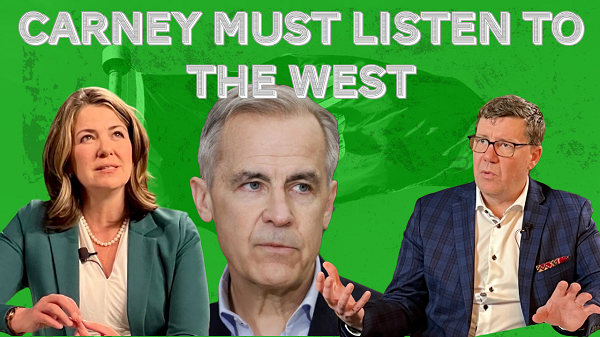
If Prime Minister Mark Carney doesn’t listen to the West, it’s going to cost Canada.
Alberta Premier Danielle Smith and Saskatchewan Premier Scott Moe are demanding that Ottawa stop stomping on their provinces’ natural resource production.
Smith is telling Carney to scrap the no more pipelines law, Bill C-69, lift the cap on Alberta’s energy and cancel the looming ban on the sale of new gasoline and diesel vehicles.
Moe is stepping in sync with Smith, listing Saskatchewan’s demands in a letter, calling for changes to the no more pipelines law, saying, “there are a few policies that are going to have to go.”
Moe is also taking aim at the industrial carbon tax saying “the tax can’t be charged on the electricity for Saskatchewan families.”
The new prime minister says he’s listening.
“I intend to govern for all Canadians,” said Carney in his election victory speech.
If that’s true, Carney must heed the demands of Smith and Moe, because Ottawa’s anti-West policies are damaging the economy and costing taxpayers a truckload of money.
How much?
Ottawa’s cap on oil and gas emissions – which creates a cap on production – will cost the Canadian economy about $20.5 billion and slash 40,000 jobs by 2032, according to the Parliamentary Budget Officer.
Canada has also seen nearly $670 billion in natural resources projects suspended or cancelled, since 2015.
To put that kind of money into perspective: $670 billion would pay for the salaries of hundreds of thousands of paramedics and police officers, for a decade.
That’s the equivalent to the value of more than one million houses in Alberta or almost two million homes in Saskatchewan.
That kind of money is worth the entire income tax bills for the populations of Alberta, Saskatchewan and Manitoba for about 10 years.
That’s just the lost money from natural resources.
Carney’s looming ban on the sale of new gasoline and diesel vehicles also has a huge price tag.
Canada’s vehicle transition could cost up to $300 billion by 2040 to expand the electrical grid, according to a report for Natural Resources Canada.
If Carney is serious about boosting the economy and governing for all Canadians, getting the government out of the way of natural resource projects and scrapping the expensive plan to stop people from buying new gas and diesel vehicles is a good first step.
The West has been firmly asking for Ottawa to mind its own business for years.
Cancelling the industrial carbon tax is another way for Carney to show that he’s serious about growing the economy and governing for all Canadians.
On the same day Carney scrapped the consumer carbon tax, the Saskatchewan government dropped its industrial carbon tax down to zero.
“By eliminating industrial carbon costs which are often passed directly on to consumers – the province is acting to protect affordability and economic competitiveness,” said the Saskatchewan government’s news release.
Alberta’s industrial carbon tax is now frozen. Increasing the tax above its current rate would make Alberta “exceptionally uncompetitive,” according to Alberta Environment Minister Rebecca Schulz.
Business groups in both provinces lauded each premier, saying it would make their industries more competitive and help bring down costs.
When Ottawa forces businesses like fuel refineries or fertilizer plants to pay the carbon tax, they pass on those costs on to taxpayers when they heat their homes, fill up their cars and buy groceries.
If companies are forced to cut production or leave the country because of the industrial carbon tax and policies like the energy cap, it’s regular Albertans and Saskatchewanians who are hurt the most through job losses.
If Carney intends to govern for all Canadians he needs to listen to Smith and Moe and scrap these policies that are set to cost taxpayers billions and slash tens of thousands of jobs.
Kris Sims is Alberta Director and Gage Haubrich is Prairie Director for the Canadian Taxpayers Federation.
-

 COVID-192 days ago
COVID-192 days agoOntario man launches new challenge against province’s latest attempt to ban free expression on roadside billboards
-

 COVID-191 day ago
COVID-191 day agoNew Peer-Reviewed Study Affirms COVID Vaccines Reduce Fertility
-

 Business22 hours ago
Business22 hours agoOttawa Funded the China Ferry Deal—Then Pretended to Oppose It
-
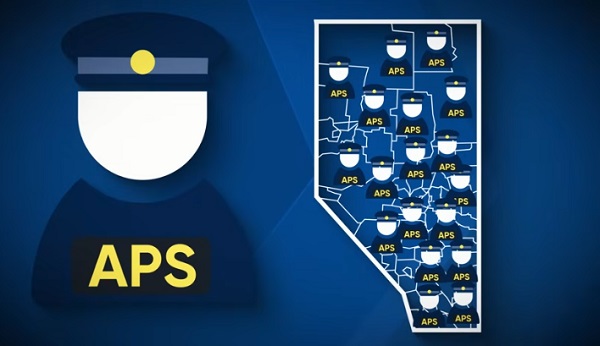
 Alberta2 days ago
Alberta2 days agoAlberta Next Takes A Look At Alberta Provincial Police Force
-
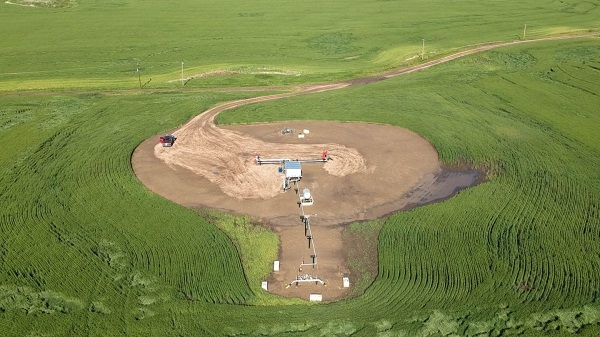
 Alberta1 day ago
Alberta1 day agoThe permanent CO2 storage site at the end of the Alberta Carbon Trunk Line is just getting started
-

 MAiD24 hours ago
MAiD24 hours agoCanada’s euthanasia regime is not health care, but a death machine for the unwanted
-

 Alberta2 days ago
Alberta2 days agoCanadian Oil Sands Production Expected to Reach All-time Highs this Year Despite Lower Oil Prices
-
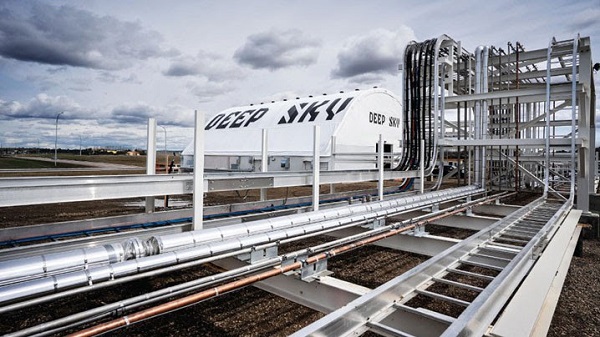
 Alberta21 hours ago
Alberta21 hours agoAlberta’s government is investing $5 million to help launch the world’s first direct air capture centre at Innisfail





